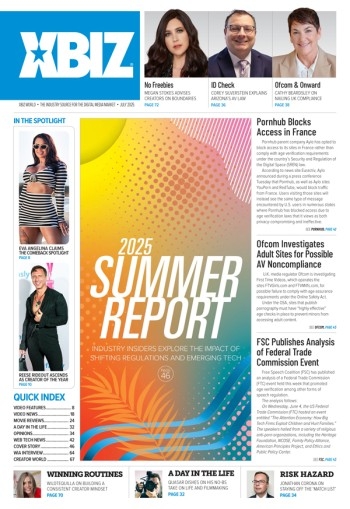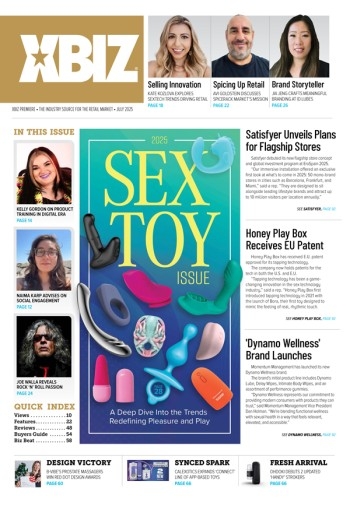The world of online dating continues to grow, attracting new audiences — but this does not have to mean taking visitors away from traditional adult websites — especially if those sites can incorporate elements of the online dating experience into their offerings.
According to the Pew Research Internet Project, one in 10 Americans have used an online dating site or mobile dating app and many also know someone who uses an online dating service or who has found a spouse or long-term partner via these sites, forming a significant and lucrative audience no matter how you slice it.
Today six out of every 10 Americans use social networking sites (SNS) such as Facebook or Twitter, and these sites are often intertwined with the way they experience their past and present romantic relationships.
Pew Research put out a report late last year entitled “Online Dating & Relationships,” wherein authors Aaron Smith and Maeve Duggan laid out vital statistics surrounding the online dating phenomenon and provide insights that are useful to adult website operators — whether they target the online dating sector or not…
It’s important to note at the outset that within the adult entertainment realm the notion of online dating, often referred to as “casual dating,” is a different breed than mainstream dating offers, which tend to be more focused on relationships than on sexual encounters.
That being said, there are similar psychological motivators driving both audiences — with emotional factors that can be harnessed for profit and the benefit of your customers.
Let’s take a closer look:
The Pew Research report notes that in general, public attitudes towards online dating have become much more positive in recent years, and that popular social networks such as Facebook are playing a prominent role in romantic relationships. The report states that 11 percent of American adults — plus 38 percent of those currently “single and looking” — have used online dating sites or mobile dating apps; a figure that includes the seven percent of cell phone app users that report having used a dating app on their cell phone.
The Pew Research report reveals that attitudes towards online dating are becoming more positive over time, but it cautions that even today, online dating is not universally seen as a positive activity — and reveals that a significant minority of the public views online dating skeptically — but at the same time, public attitudes towards online dating have grown more positive in the eight years since the firm last reviewed the marketplace.
Pew Research cites statistics such as the 15 point rise in Internet users’ belief that online dating is a good way to meet people: from 44 percent in 2005, to 59 percent today.
Countering this positive perception is the finding that 21 percent of Internet users believe that people who use online dating sites are seen as being “desperate” — although this figure represents an eight point drop from the 29 percent who believed this in 2005.
The report also reveals that 32 percent of Internet users believe that online dating keeps people from settling down because they always have options for people to date.
This desire for options — both now and in the future — is a key element for adult marketers to seize upon, where consistency and variety may form the seeds of success.
Familiarity with online dating has increased dramatically since the 2005 survey; with Pew Research noting that 42 percent of Americans know someone who has used online dating — an 11 point boost from 2005’s 31 percent — adding that people in nearly every demographic group are likely to know someone who uses online dating. This is especially true for those at the upper end of the socio-economic scale, where 57 percent of college graduates and a likewise percentage of Americans with an annual household income of $75,000 or more know someone into online dating — with 40 percent knowing someone who met their spouse or partner this way.
This level of popularity means that negative experiences on online dating sites are also relatively common, with Pew Research finding that more than half (54 percent) of online daters felt that someone else “seriously misrepresented themselves” in their profile — and more seriously, 28 percent of online daters have felt harassed or uncomfortable by contacts from someone they met via an online dating site or app.
Not surprisingly, women are more likely than men to experience awkward contacts, with 42 percent of females compared to only 17 percent of men citing such complaints.
Women are also twice as likely to have someone else create or review their profile — with 30 percent of females seeking such assistance, compared to only 16 percent of men.
Creative marketers will find immense opportunities in these statistics.
Despite how much fun those TV ads for real-life events held by mainstream dating sites seem to be, however, Pew Research finds that a mere four percent of online daters attended a group outing or other real world event organized by an online dating site — and while an adult oriented casual dating site may experience no lack of male participants — it would doubtless be a sausage fest best suited to the gay casual dating market.
The better news for adult marketers and promoters of casual dating sites is that a full 40 percent of online daters have used sites designed for people with shared interests or backgrounds, and that one in three have actually paid to use a dating site or application.
With a third of the audience willing to pay, there’s certainly a lot of profit potential, but to get your share, you need to know what folks are expecting from online dating sites — and in 2014, this means using these sites to flirt, research potential partners, and check up on old flames — with a quarter of Internet users flirting with someone online and the same amount searching for information about past lovers — a figure more than doubling the 11 percent reported in 2005.
Expectedly, younger adults are especially prone to online flirting, with 47 percent of 18-24 year old Internet users and 40 percent of those aged 25-34 reporting this activity — with older audiences more prone to look up past flames online — with 21 percent of 45-54 year old and 15 percent of 55-64 year olds using the Internet to look up someone they used to date.
This pattern of seeking out information about lovers is echoed by 29 percent of those with recent dating experience who have gone for info about someone they were currently dating or about to meet for a first date — more than doubling the 13 percent of Internet users who did this in 2005.
It is an arena where online dating and social networking merge.
“Today six out of every 10 Americans use social networking sites (SNS) such as Facebook or Twitter, and these sites are often intertwined with the way they experience their past and present romantic relationships,” the Pew Research report finds. “These sites are also being used as a source of background research on potential romantic partners.”
The report reveals that one third (31 percent) of all SNS users have used these sites to check up on someone they used to date or were in a relationship with, and that 17 percent post pictures or other details from a date on social networking sites. These figures rise as the user’s age drops, with 48 percent of 18-29 year old SNS users checking up on those they dated in the past — while 31 percent of this age group has posted details or pictures from a date on a social networking site.
12 percent of SNS users with recent dating experience have “friended” or followed someone because a friend suggested they might want to date that person — with 15 percent of SNS users having asked someone out on a date via a social networking site.
This lack of real world contact often leads younger users into relationship drama.
“As more and more Americans use social networking sites, these spaces can become the site of potential tension or awkwardness around relationships and dating,” the report explains, adding that “These sites can also serve as a lingering reminder of relationships that have ended — 17 percent of social networking site users have untagged or deleted photos on these sites of themselves and someone they used to be in a relationship with.”
Other stats show that 27 percent of all SNS users having ‘unfriended’ or blocked someone who was flirting in a way that made them feel uncomfortable, while 22 percent ‘unfriended’ or blocked someone they were once in a relationship with.
“Not surprisingly, young adults — who have near-universal rates of social networking site use and have spent the bulk of their dating lives in the social media era — are significantly more likely than older social media users to have experienced all three of these situations in the past,” the Pew Research report concludes. “And women are more likely than men to have blocked or ‘unfriended’ someone who was flirting in a way that made them uncomfortable.”
The lessons are myriad for adult website operators wishing to enhance their dating sites (or to compete with dating sites): people want to be connected with other people, they want to feel safe when doing it and they want to trust who they are doing it with is who they think they are, with no fake profiles. Females must be encouraged and protected — and males carefully catered to — even if via carefully crafted “chat bots” (all properly disclosed in your site’s TOS of course).





